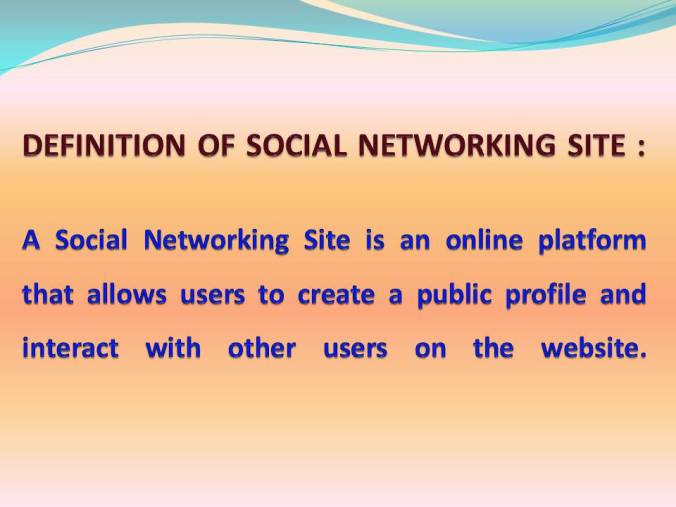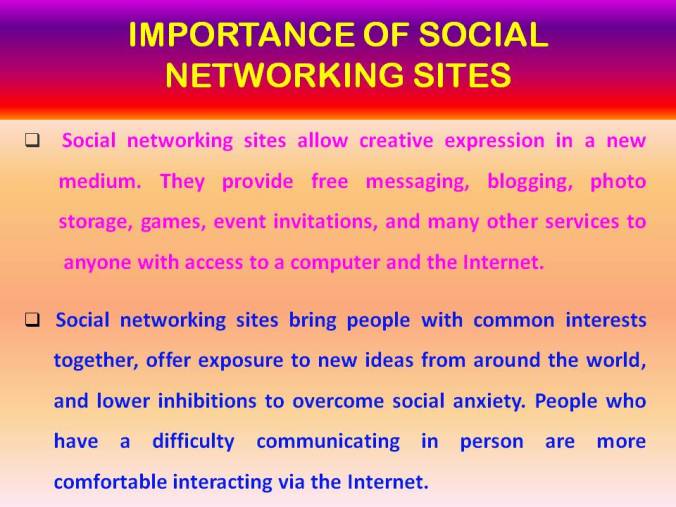Habitat
“A habitat is an ecological or environmental area that is inhabited by a particular species of animal, plant, or other type of organism. The term typically refers to the zone in which the organism lives and where it can find food, shelter, protection and mates for reproduction. It is the natural environment in which an organism lives, or the physical environment that surrounds a species population.”
Concept of Habitat Destruction
Habitat destruction is the process in which natural habitat is rendered unable to support the species present. In this process, the organisms that previously used the site are displaced or destroyed, reducing biodiversity. Habitat destruction by human activity is mainly for the purpose of harvesting natural resources for industry production and urbanization. Clearing habitats for agriculture is the principal cause of habitat destruction. Other important causes of habitat destruction include mining, logging, trawling and urban sprawl. Habitat destruction is currently ranked as the primary cause of species extinction worldwide. It is a process of natural environmental change that may be caused by habitat fragmentation, geological processes, climate change or by human activities such as the introduction of invasive species, ecosystem nutrient depletion, and other human activities.
Habitat loss poses the greatest threat to species. The world’s forests, swamps, plains, lakes, and other habitats continue to disappear as they are harvested for human consumption and cleared to make way for agriculture, housing, roads, pipelines and the other hallmarks of industrial development. Without a strong plan to create terrestrial and marine protected areas important ecological habitats will continue to be lost.
Habitat loss can usually be placed in three categories. There is habitat destruction which is done by completely removing trees and plants and instantly changing the landscape. Mass deforestation by cutting down trees is a prime example of this.
Another type of habitat loss takes place by altering the land in a way that confuses the animals and disrupts their natural way of living. This is called habitat fragmentation and it occurs when we create roads and place attractions in the midst of woodlands and other natural areas.
Causes of Natural Habitat Loss and Destruction
Knowing that the death of wildlife and negative environmental impact are the results of habitat loss, it’s reasonable to question why we continue to carry on habits that destroy biodiversity.
- One of the main reasons is the agricultural industry. Unlike in the past, when small areas of land were used to grow crops for families and local communities, farming is now a big business that can be ran by large corporations and it requires the mass production of foods that are able to quickly be sold for profit. Extra land is needed to grow more edible goods and more land has to be cleared A vast majority of natural habitats are destroyed for human homes as well.We decide to clear out land for large buildings and to make room for attractions that are profitable. Habitats are not always destroyed to use the land for humans to live. They are also destroyed so that their materials can be used to keep us comfortable. For example, the trees are used to create various paper products and wood to meet these needs.
- Wood is also used for the production of furniture and miscellaneous items.
- Habitats are also lost to make room for more businesses and to meet the demand of large corporations.If you think about how many stores, homes, and various places of business are in existence, then you know that these places cover a massive amount of land. Many of them now stand where there was once only wildlife and natural habitats.
- Swamps and marshes are examples of areas known as wetlands. Wetlands are land areas of soil that are covered with water. Some wetlands form based on the season while others are permanent fixtures in a given area. Wetlands have their own ecosystem that is unique and extremely diverse. Unlike the forests where we cut down trees and make the land more compact from above, we fill wetlands to cover them up so that we can build things on top of them.
Impact of habitat loss on species
Habitat loss is probably the greatest threat to the variety of life on this planet today.
It is identified as a main threat to 85% of all species described in the IUCN’s Red List (those species officially classified as “Threatened” and “Endangered”).
Increasing food production is a major agent for the conversion of natural habitat into agricultural land.
Why is it happening?
Forest loss and degradation is mostly caused by the expansion of agricultural land, intensive harvesting of timber, wood for fuel and other forest products, as well as overgrazing.
High land conversion rates
The net loss in global forest area during the 1990s was about 94 million ha (equivalent to 2.4% of total forests). It is estimated that in the 1990s, almost 70% of deforested areas were converted to agricultural land.
Around half of the world’s original forests have disappeared, and they are still being removed at a rate 10x higher than any possible level of regrowth. As tropical forests contain at least half the Earth’s species, the clearance of some 17 million hectares each year is a dramatic loss.
Coastal and marine areas
Human impact on terrestrial and marine natural resources results in marine and coastal degradation. Population growth, urbanization, industrialization and tourism are all factors.
In 1994, it was estimated that 37% of the global population lived within 60 km of the coast. Poverty, consumption and land-use patterns contribute to the degradation of marine habitats and to the destruction of the species that rely on them to survive.
Causes and impacts of habitat loss & degradation:
| Activity |
Habitats Affected |
Impacts To Habitats |
| Shoreline armouring(“hard” structures such as seawalls, angular rock, jetties, etc., built to protect beaches and shorelines from erosion) |
Intertidal and subtidal shorelines |
· Loss of complexity and surface area
· Depletion of sediment supply to adjacent areas
· Increased exposure to wave energy; fewer species can survive |
| Fishing – bottom trawling (large ships that drag weighted nets with rollers across the ocean bottom) |
Subtidal and deep water marine areas |
· Physical destruction of bottom-dwelling plants/animals
· By-catch (unmarketable fish species that are thrown away) |
| Dredging(excavation in marine or freshwater areas) |
Subtidal , intertidal and freshwater habitats |
· Physical destruction of bottom-dwelling plants/animals
· Smothering of bottom-dwelling organisms with displaced sediment
· Fewer plants can grow in reduced light; fish gills become clogged with sediment |
| Diking and in-filling |
Estuaries ; shorelines; wetlands |
· Productive intertidal and wetland habitat is destroyed, replaced with ecologically less valuable land use
· Decline of commercially important species |
| Invasive Species |
Shoreline, upland , freshwater habitats |
· Directly compete with native species for habitat, food
· Alter structure of habitat; often create dense, unproductive monocultures |
| Logging and vegetation removal |
Upland, freshwater, marine habitats |
· Destroys structure of habitat
· Removes organic material necessary for soil replenishment; machinery disturbs soil
· Can create erosion, which degrades water quality and causes further habitat loss
· Less large woody debris in streams alters flow and channel characteristics
· Reduces natural infiltration of rainwater |
| Log booming (storage of logs in lakes and sea ports) |
Lakes, sheltered marine habitats |
· Accumulation of wood debris on the bottom of the water body smothers bottom-dwelling plants/animals
· Chemical composition of substrate is altered
· Decomposition of wood debris by bacteria depletes oxygen in water |
| Agriculture |
Upland, marine, freshwater habitats |
· species crops (loss of wildlife habitat)
· Possible runoff of livestock wastes, pesticides, fertilizers, into freshwater and marine environments
· Transformation of streams into drainage ditches (less valuable habitat) |
| Sewage, animal wastes and fertilizer pollution |
Streams, wetlands, lakes, marine areas |
· Nutrients cause explosive algae growth; decomposition of algae robs water of oxygen; “dead zones” created
· Heavy metals and pharmaceuticals in wastes affect health of aquatic organisms
· Sediments in sewage/animal waste may bury bottom-dwelling organisms |
| Industrial and automobile pollution |
All habitats |
· Many substances are directly toxic to plants/animals; others have long-term cumulative effects on health
· Heavily polluted areas become “dead zones” where few organisms can live |
The Biggest Dangers of Habitat Destruction
As the human population grows and we continue to increase our impact on the global landscape, such as through agriculture and urban development, more and more of the landscapes across our planet are becoming fragmented. This fragmentation leaves much less quality habitat for native species, and is having many negative impacts on their ability to survive and thrive.
The following list discusses many of the biggest dangers of habitat destruction.
- Increase of vulnerability
Some species are extremely sensitive to disturbed habitat and may not be able to adapt very well to such disturbances. This is likely to increase these species’ vulnerability to extinction.
- Reduction in overall biodiversity
Because of an overall reduction in suitable habitat, some species may not survive. This inevitably results in a reduction of the biodiversity that is present in a particular area or region, especially for species that only live in one or just a few specific locations on Earth.
Inbreeding depression can result in habitat “islands,” where individual members of a species are separated from one another and can no longer reproduce with the rest of the population. This essentially leads to a “bottleneck” of genes within the remaining population, where the genetic diversity of the species is reduced due to fewer individuals.
Reduced population numbers can also lead to inbreeding among close relatives, and the expression of negative genetic traits among the remaining individuals, such as physical deformities. This process is known as “inbreeding depression,” where the population’s ability to survive and reproduce is reduced.
- A reduction in potential available mates
Individuals may be left only with mate choices that have negative traits or those that are close relatives.
- An increased vulnerability to predation
As habitat becomes more fragmented, individuals may become more vulnerable to predation due increased access by predators.
- Overall habitat quality diminished for species
Fragmented habitat contains much more edge than the intact habitat has. Habitat fragmentation dramatically reduces the amount of quality habitat for those species that require large tracts of undisturbed land, such as the Northern Spotted Owl (Strix occidentalis caurina) in the State of California, which requires large tracts of high quality old-growth forest for its critical habitat.
- An increased likelihood of future habitat disturbances
Fragmented habitat often leads to even more fragmented habitat and disturbances, due an increased level of access. The remaining habitat becomes increasingly vulnerable to predators, the development of roads and infrastructure, invasion by invasive species, and increased access for humans to hunt and harvest species and natural resources that exist there, such as through mining and logging activities. In the case of invasive species, native species can be out-competed by the invasive ones, potentially threatening the survival of the natives.
Habitat fragmentation can make it difficult for some species to migrate to important habitat in order to reach seasonal food sources, mates, and reach suitable places to raise their young.
- Increased vulnerability to natural disasters
As habitat becomes more fragmented, it also becomes more vulnerable to destruction from natural disasters such as flooding, hurricanes, and wildfires. Large tracts of intact habitat typically provides greater protection to many of these types of disasters than a highly fragmented landscape.
- Species management becomes more difficult
When habitat becomes fragmented, it makes it more difficult for natural resource and wildlife managers to effectively manage species populations that are isolated from each other and are being subjected to greater threats and stresses.
Threats to Biodiversity
Habitat loss is a process of environmental change in which a natural habitat is rendered functionally unable to support the species present. This process may be natural or unnatural, and may be caused by habitat fragmentation, geological processes, climate change, or human activities such as the introduction of invasive species or ecosystem nutrient depletion. In the process of habitat destruction, the organisms that previously used the site are displaced or destroyed, reducing biodiversity.
Human destruction of habitats has accelerated greatly in the latter half of the twentieth century. Natural habitats are often destroyed through human activity for the purpose of harvesting natural resources for industry production and urbanization. Clearing habitats for agriculture, for example, is the principal cause of habitat destruction. Other important causes of habitat destruction include mining, logging, and urban sprawl. Habitat destruction is currently ranked as the primary cause of species extinction worldwide.
HABITAT DESTRUCTION IN MARADU AREA
Maradu is located about 9kms from Ernakulam and lies on the NH 66. It is a marshy land rich in greenery and vegetation. It has been a habitat to a wide variety of plants and animals. When I came to reside here eight years ago, I had marvelled at its biodiversity and rich vegetation. But over the years, things have changed. There has been large scale destruction of trees and grasslands.
There was a huge plot of land adjacent to my house, which was a home of monitors,mongoose,snakes and a variety of birds like coucal, parrots, cuckoos, mynas, eagles . it was a feast for the eyes to see the plants and animals live happily in their natural habitat. Myself being a nature admirer, I have spent a number of memorable moments watching nature at its best.
However, about an year ago the plot was totally mowed down using huge JCBs. I could see the frantic animals like mongoose and monitors running to save their lives and climbing the compounds of nearby houses. Many animals died, some escaped and the birds never visited the place again. The plot has two huge houses today,that stand as testimony of habitat destruction. Whenever I see these buildings I hear the muffled cries of the animals whose natural habitat got destroyed due to the cruelty of human beings.
CONCLUSION
It can be concluded that species spatial distributions are directly affected by global warming and subsequently climate change. In general terms it has been stated by the scientific community that the distribution of species have been moving in a poleward trend. Within the realm of our study we found no conclusive evidence to prove or disprove this statement. The evidence that we did find and cited leads us to the conclusion that the distribution of species is infact being altered by climatic change, but we were unable to determine exactly what that change was. This project focused on bird species (as we found they were ideal indicators of species shifts due to the fact that their patterns of movement are already larger and more immediate than other organisms. This and the fact that bird movements and migrations are well documented are the reason we chose to focus our study on birds). Evidence found specifically from birds shows that there is a correlation between bird population characteristics and alterations in climatic factors such as temperature and precipitation. The change in population characteristics shows that some sort of shift or generally trended movement is occurring.





